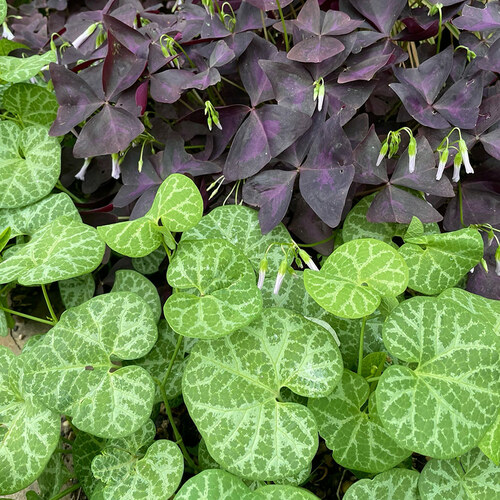Happy Monday GPODers!
We continue our expedition to spring gardens today by heading south to Dallas, Texas with Cindy Bolz. Cindy has shared her garden twice in the past (check those submissions out here: Spring in Dallas and Collecting Japanese Maples), and she always has something colorful and lush to share despite the intensity of Texas heat. A variety of flowers are sprinkled throughout her landscape, but it’s her incredible assortment of glorious foliage plants that really shine.
As I read about Rhonda’s beautiful hellebores (I too have lots of them and they are spectacular this year) I decided to submit some garden photos.
In the first photo you see a six-foot tall weeping Ryusen Japanese maple (Acer palmatum ‘Ryusen’, Zones 5–7), with Big Blue liriope (Liriope muscari ‘Big Blue’, Zones 5–10) below it on the left. The peek of purple flowers are the Chocolate Chip ajuga (Ajuga reptans ‘Chocolate Chip’, Zones 4–9) you will see again in photo five. To the right of the tree, on the stand made of concrete pavers (12” between 18” pavers) is another weeping Japanese maple. This tree was recently introduced by a grower who has not yet named the cultivar. There are only six of them and mine, for now, is named “Number 5”.
 The second photo shows an ordinary coralberry plant (Symphoricarpos orbiculatus, Zones 2–7) that I placed in a container when I was attempting to control a runaway patch of coralberry in a perennial bed. It has become such a hit in the container that I shall continue to keep it there.
The second photo shows an ordinary coralberry plant (Symphoricarpos orbiculatus, Zones 2–7) that I placed in a container when I was attempting to control a runaway patch of coralberry in a perennial bed. It has become such a hit in the container that I shall continue to keep it there.
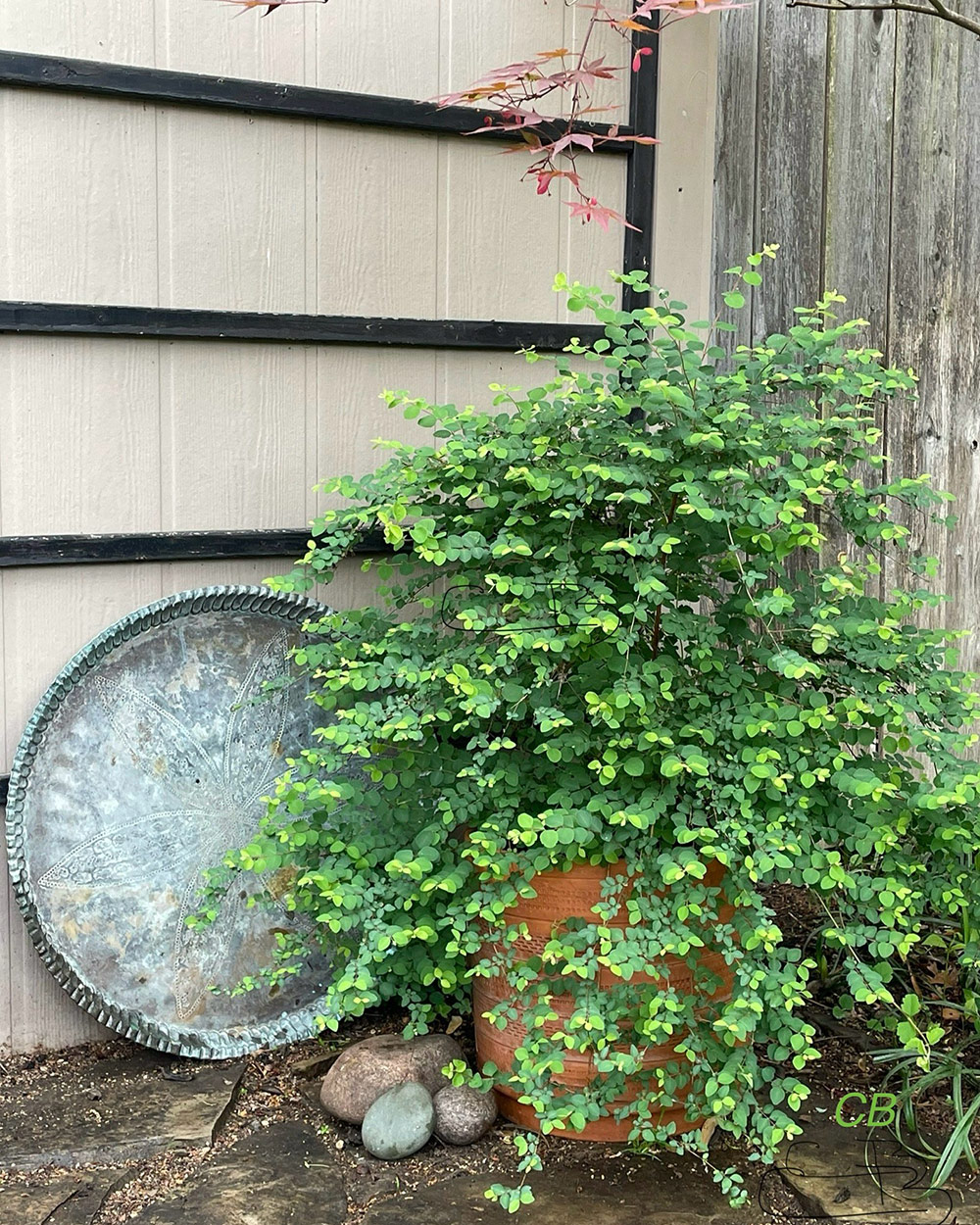 Here is an even better photo, which demonstrates the size of the container.
Here is an even better photo, which demonstrates the size of the container.
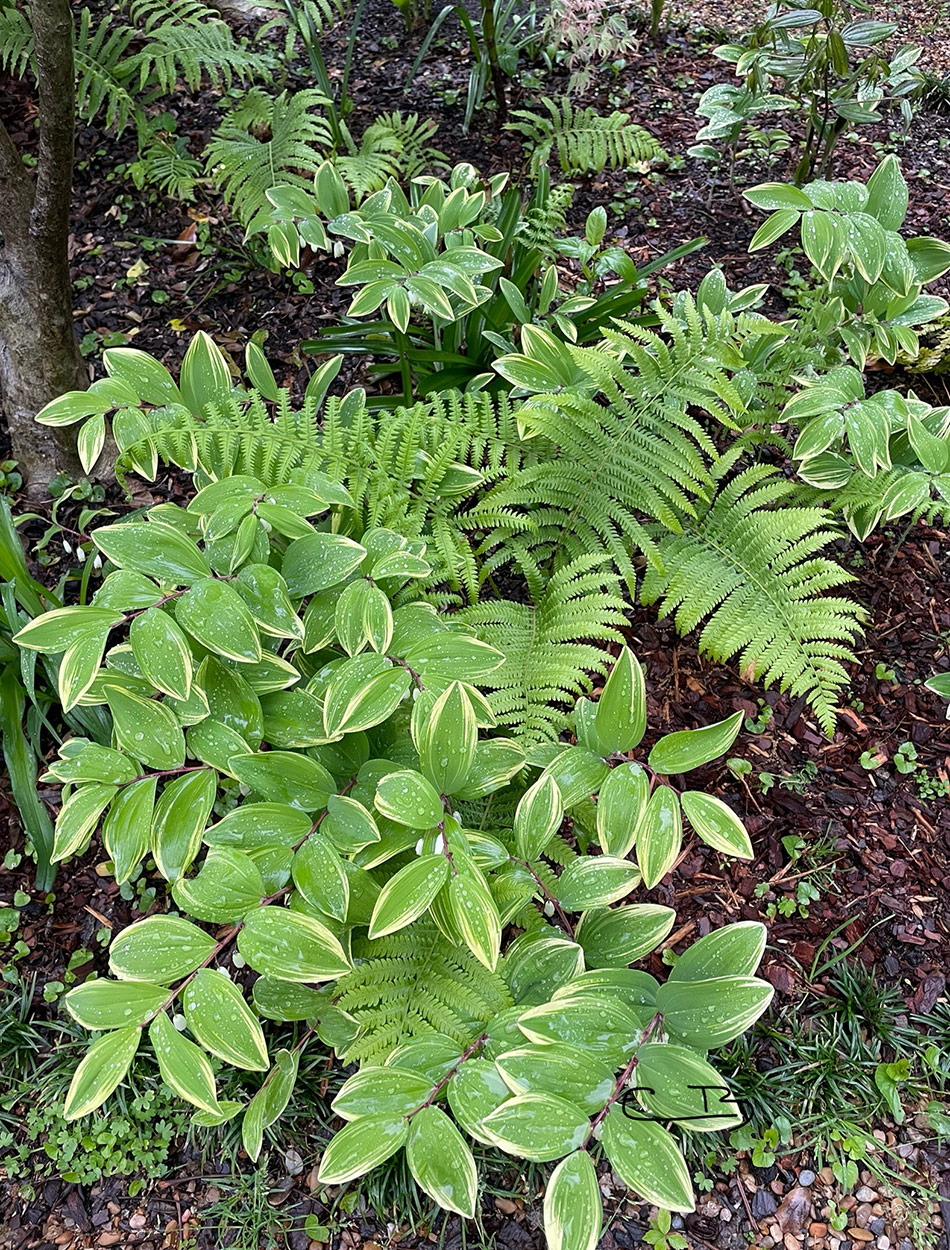 I love variegated plants and the next three photos each include at least one. First, a variegated Solomon’s seal (Polygonatum odoratum ‘Variegatum’, Zones 3–8) with wood fern (Dryopteris crassirhizoma, Zones 5–8).
I love variegated plants and the next three photos each include at least one. First, a variegated Solomon’s seal (Polygonatum odoratum ‘Variegatum’, Zones 3–8) with wood fern (Dryopteris crassirhizoma, Zones 5–8).
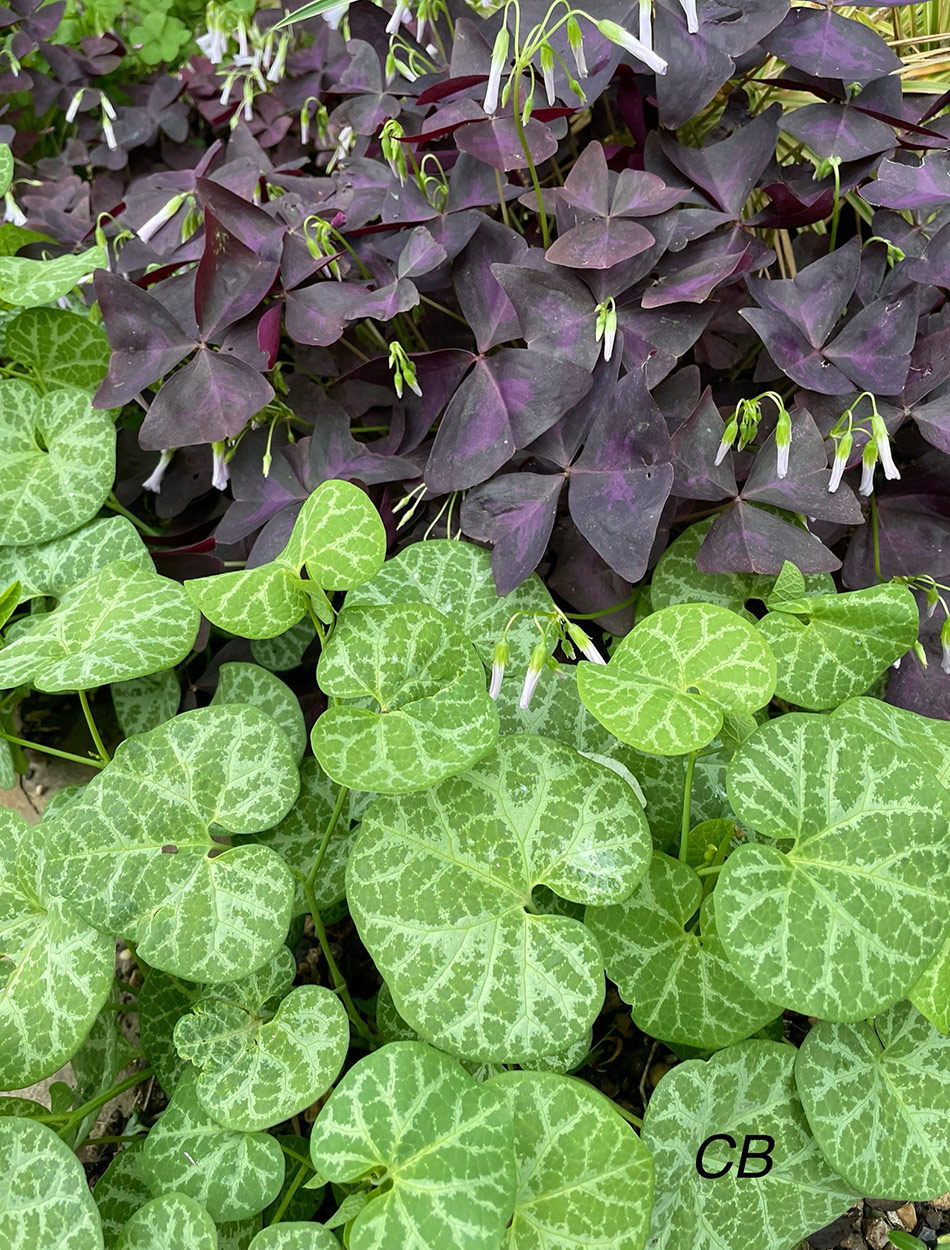 The fourth photo shows purple oxalis (Oxalis triangularis, Zones 6–10) with white-veined pipeline (Aristolochia fimbriata, Zones 7–9). Each summer I get at least two full cycles of the beautiful black pipevine butterfly (Battus philenor) laying her eggs in these leaves. This is shortly followed by a tribe of little black caterpillars munching their way through every single leaf right down to the roots. Then the leaves grow back and the full cycle repeats.
The fourth photo shows purple oxalis (Oxalis triangularis, Zones 6–10) with white-veined pipeline (Aristolochia fimbriata, Zones 7–9). Each summer I get at least two full cycles of the beautiful black pipevine butterfly (Battus philenor) laying her eggs in these leaves. This is shortly followed by a tribe of little black caterpillars munching their way through every single leaf right down to the roots. Then the leaves grow back and the full cycle repeats.
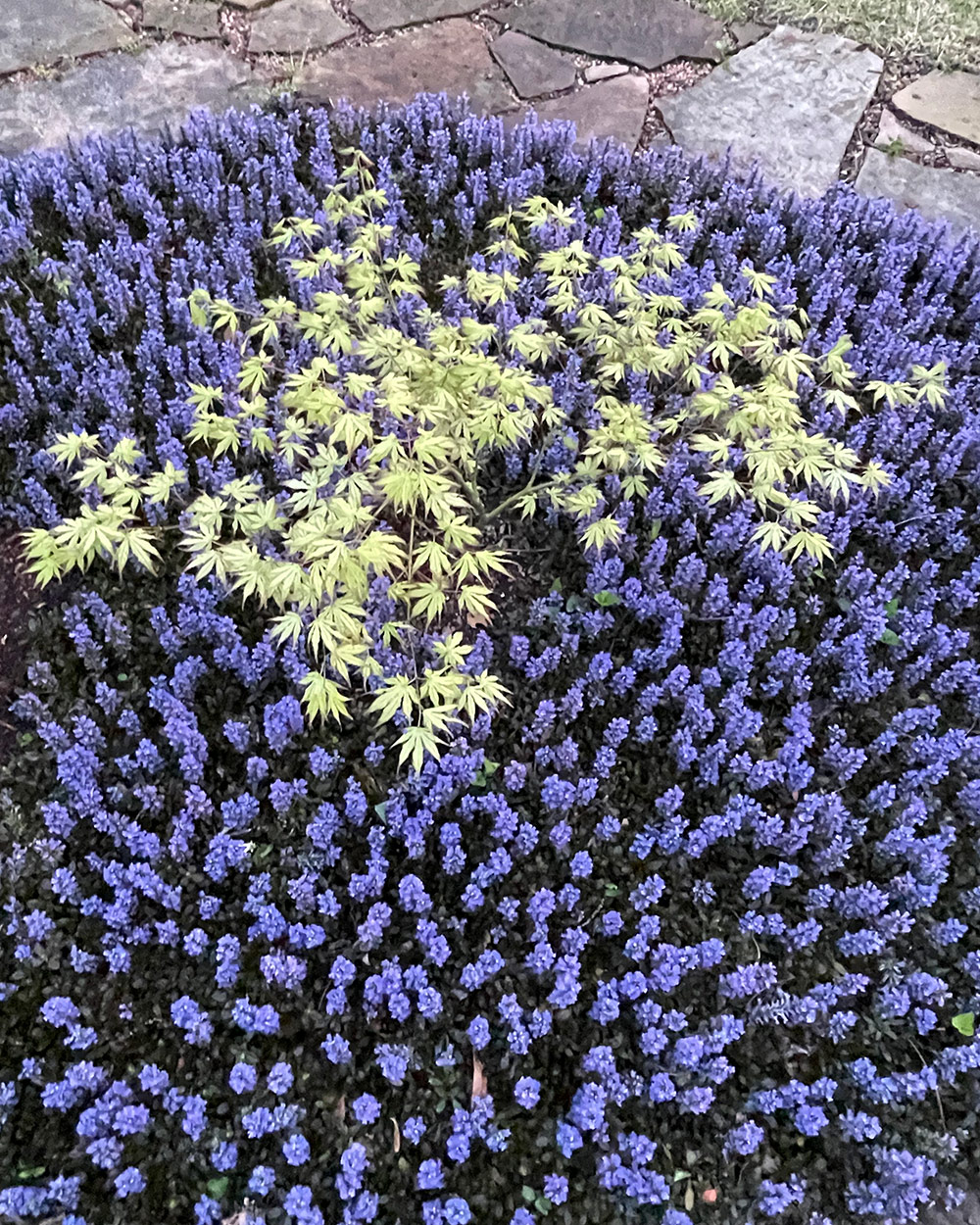 Next is a bed of Chocolate Chip ajuga in bloom this spring with a small First Ghost Japanese maple (Acer palmatum ‘First Ghost’, Zones 5–9) growing amidst them. I collect Japanese maples and currently have almost sixty.
Next is a bed of Chocolate Chip ajuga in bloom this spring with a small First Ghost Japanese maple (Acer palmatum ‘First Ghost’, Zones 5–9) growing amidst them. I collect Japanese maples and currently have almost sixty.
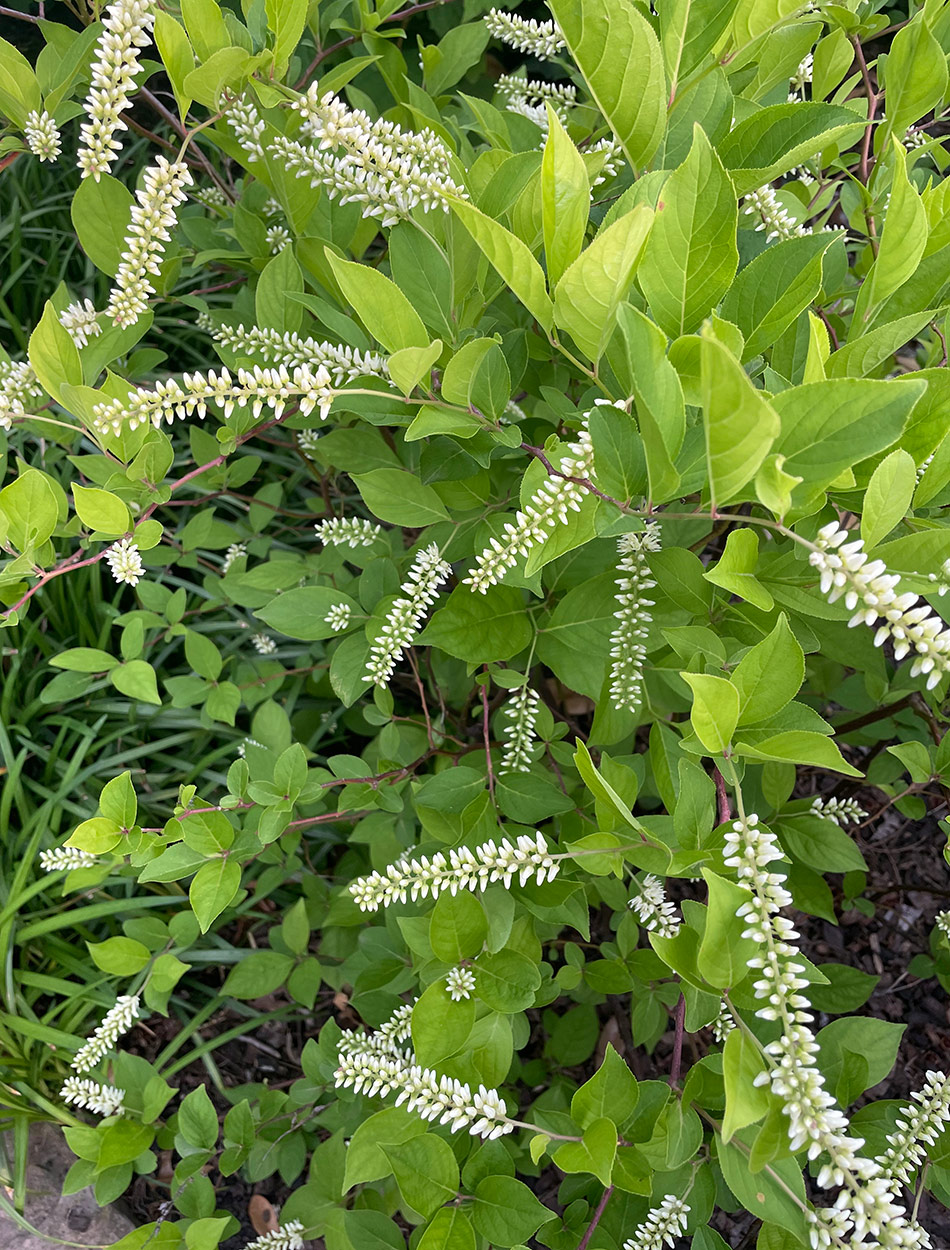 Also, here is my Little Henry® sweetspire (Itea virginica ‘Sprich’, Zones 5–9) if you want to include it.
Also, here is my Little Henry® sweetspire (Itea virginica ‘Sprich’, Zones 5–9) if you want to include it.
Thank you so much for sharing your spectacular spring garden with us again, Cindy! Your selection of plants have created a true oasis in a big city and it’s a pleasure to witness its evolution.
As the season continues on, we need photos from more gardens to get the full gamut of spring plant life. If you’re looking out on your spring garden in bloom, getting outside to complete spring chores, or seeing the signs of spring in public gardens and parks around you, please consider taking some photos and sharing them with Garden Photo of the Day! Follow the directions below to submit photos via email, or send me a DM on Instagram: @agirlherdogandtheroad.
We want to see YOUR garden!
Have photos to share? We’d love to see your garden, a particular collection of plants you love, or a wonderful garden you had the chance to visit!
To submit, send 5-10 photos to [email protected] along with some information about the plants in the pictures and where you took the photos. We’d love to hear where you are located, how long you’ve been gardening, successes you are proud of, failures you learned from, hopes for the future, favorite plants, or funny stories from your garden.
Have a mobile phone? Tag your photos on Facebook, Instagram or Twitter with #FineGardening!
Do you receive the GPOD by email yet? Sign up here.
Fine Gardening Recommended Products
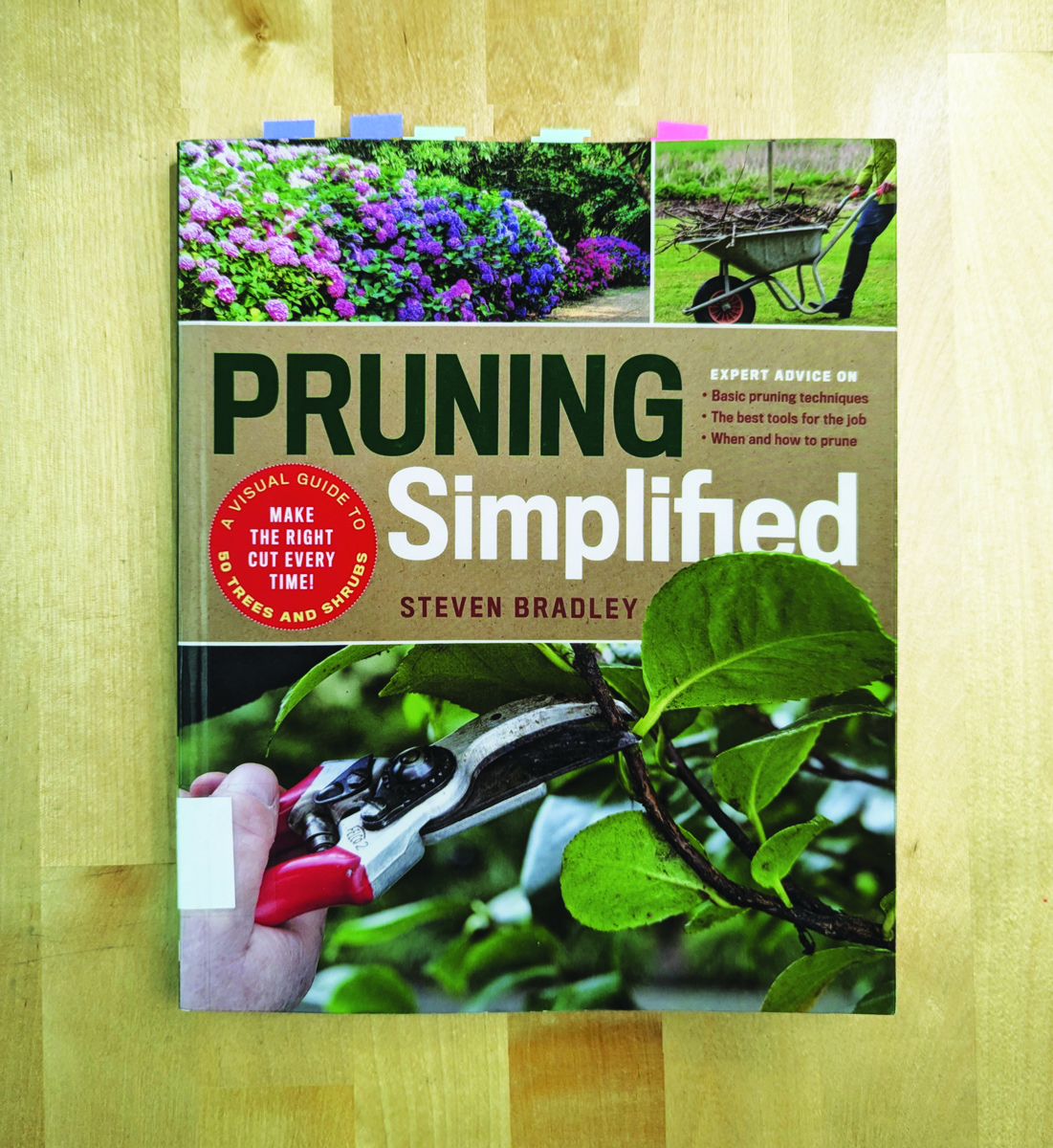
Pruning Simplified: A Step-by-Step Guide to 50 Popular Trees and Shrubs
Fine Gardening receives a commission for items purchased through links on this site, including Amazon Associates and other affiliate advertising programs.
Pruning Simplified shows you exactly how to do it. This must-have guide offers expert advice on the best tools for the job, specific details on when to prune, and clear instructions on how to prune. Profiles of the 50 most popular trees and shrubs—including azaleas, camellias, clematis, hydrangeas, and more—include illustrated, easy-to-follow instructions that will ensure you make the right cut the first time.
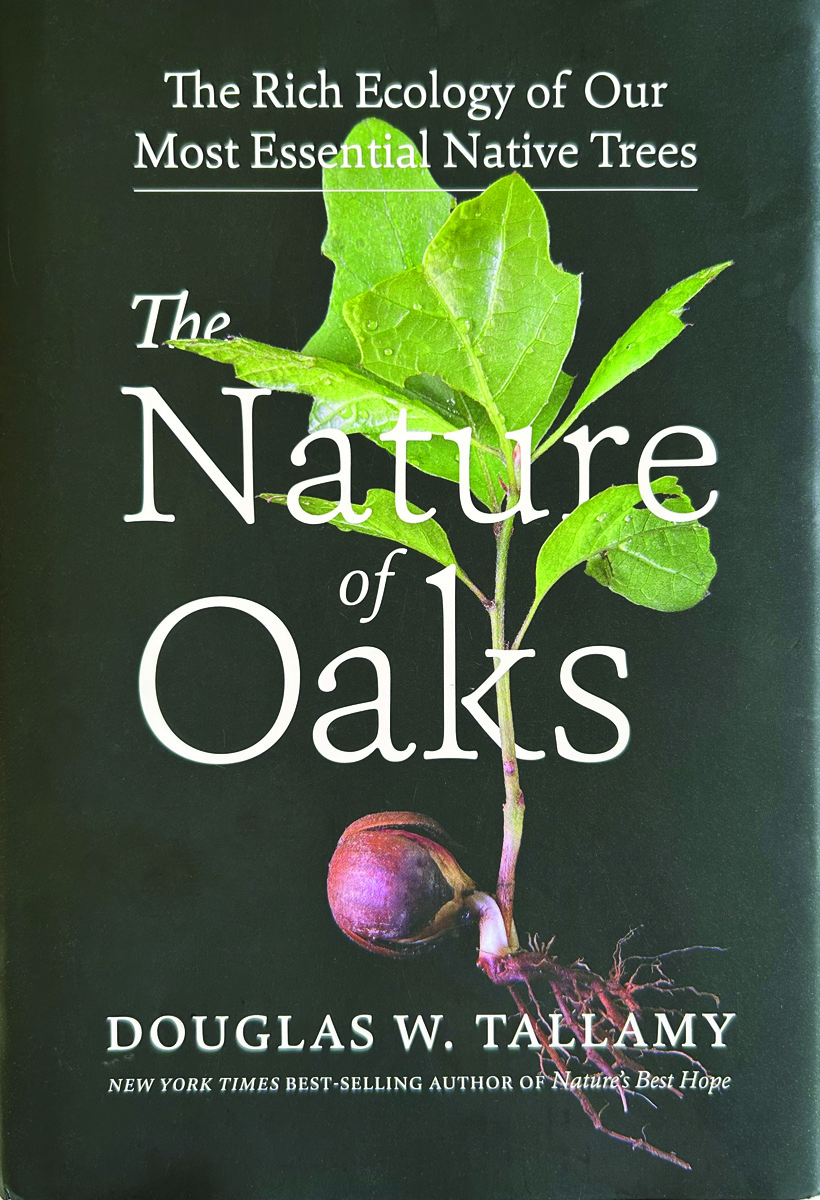
The Nature of Oaks: The Rich Ecology of Our Most Essential Native Trees
Fine Gardening receives a commission for items purchased through links on this site, including Amazon Associates and other affiliate advertising programs.
The Nature of Oaks reveals what is going on in oak trees month by month, highlighting the seasonal cycles of life, death, and renewal. From woodpeckers who collect and store hundreds of acorns for sustenance to the beauty of jewel caterpillars, Doug Tallamy illuminates and celebrates the wonders that occur right in our own backyards. He also shares practical advice about how to plant and care for an oak, along with information about the best oak species for your area.
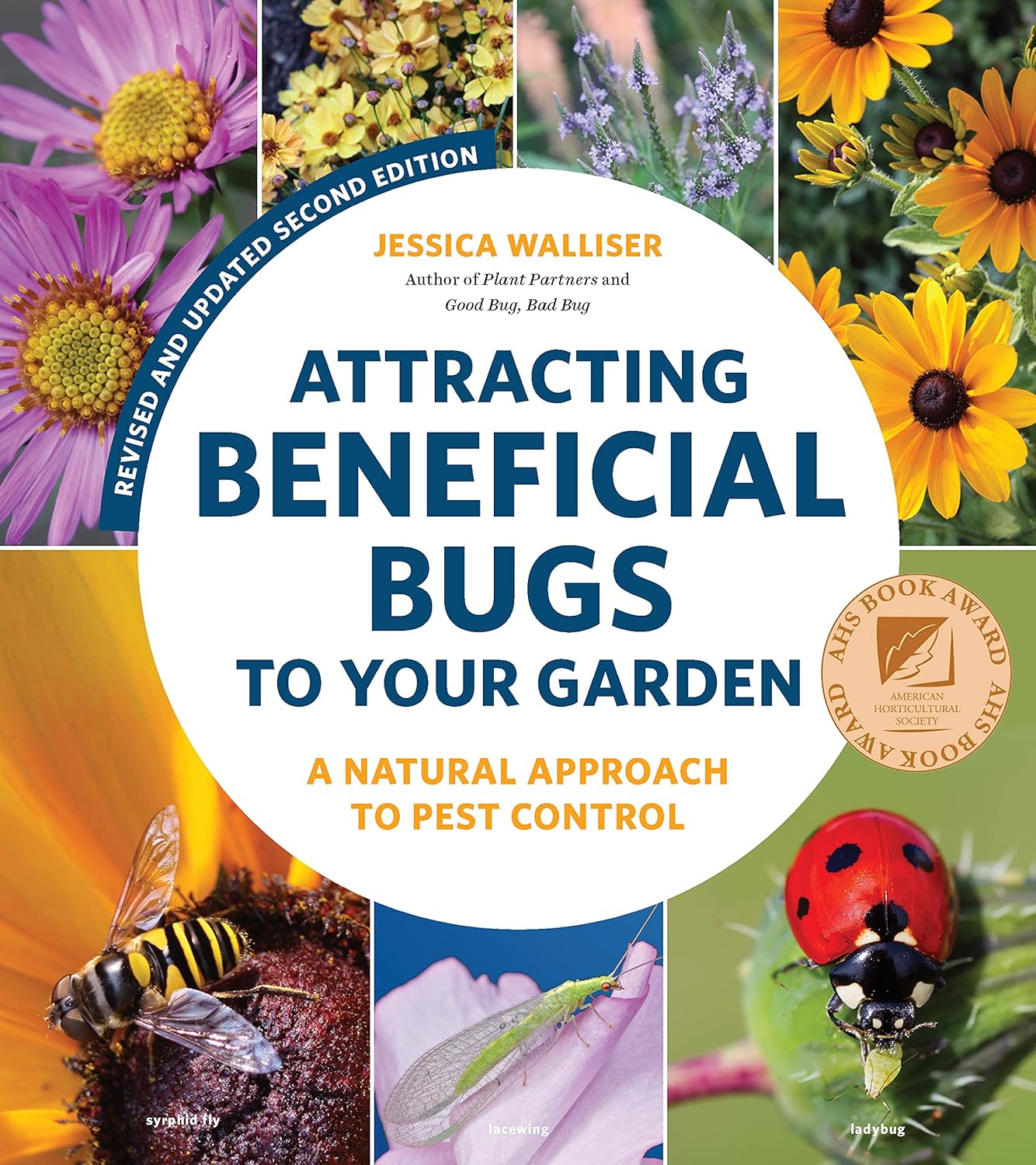
Attracting Beneficial Bugs to Your Garden, Revised and Updated Second Edition: A Natural Approach to Pest Control
Fine Gardening receives a commission for items purchased through links on this site, including Amazon Associates and other affiliate advertising programs.
This revised and updated edition of Jessica Walliser’s award-winning Attracting Beneficial Bugs to Your Garden offers a valuable and science-backed plan for bringing balance back to the garden. With this indispensable gardening reference—now updated with new research, insights, and voices—learn how to create a healthy, balanced, and diverse garden capable of supporting a hard-working crew of beneficial pest-eating insects and eliminate the need for synthetic chemical pesticides.

